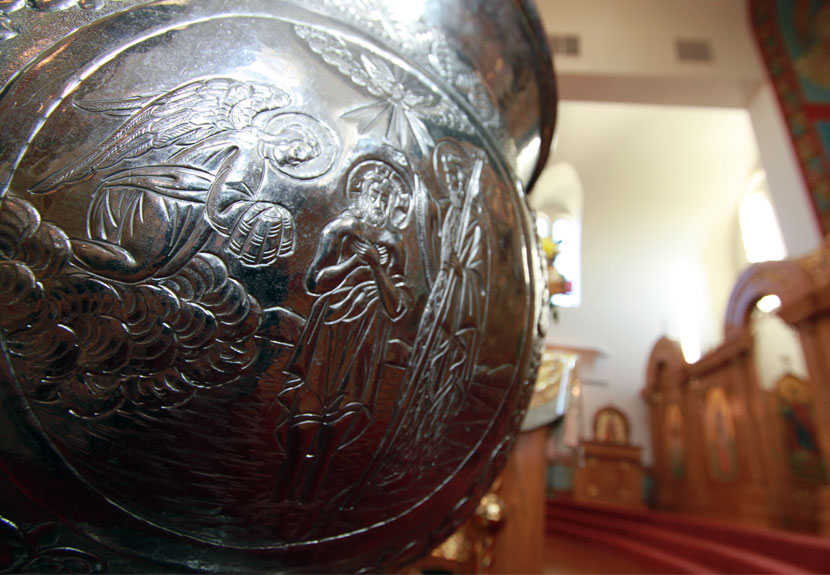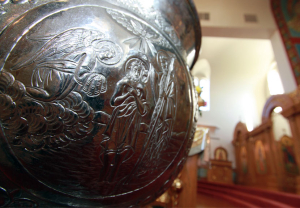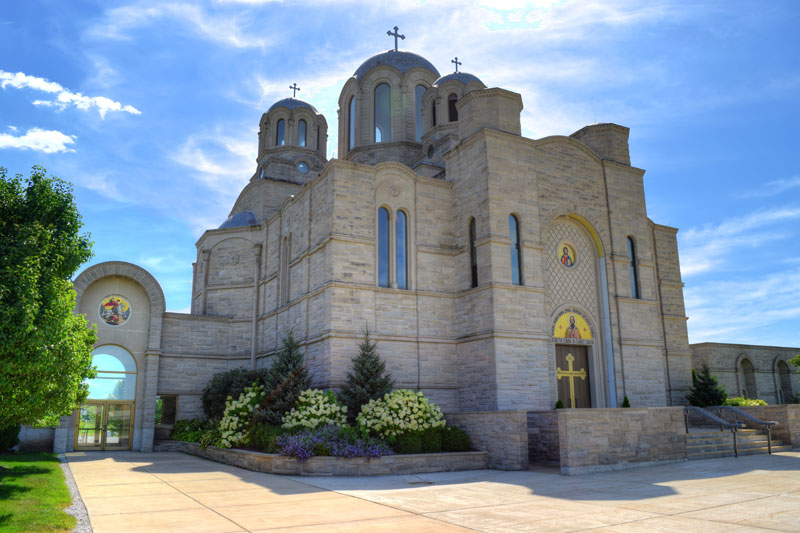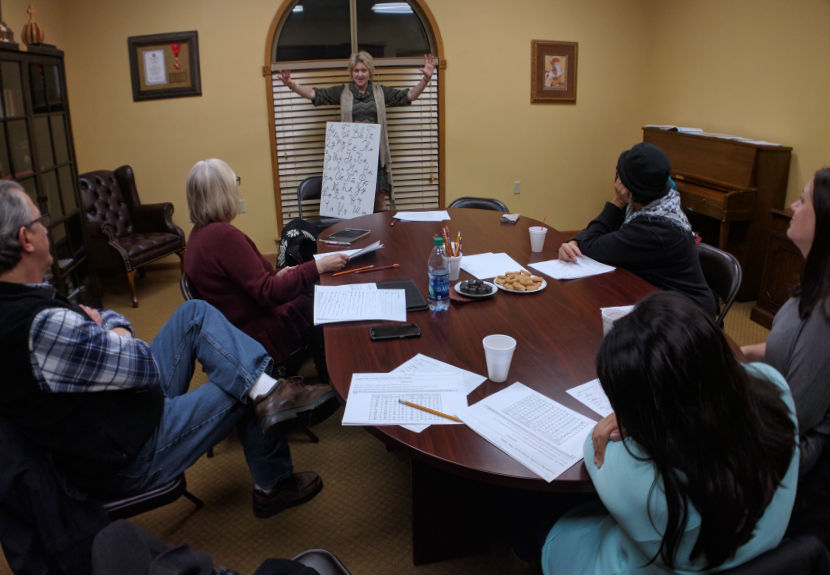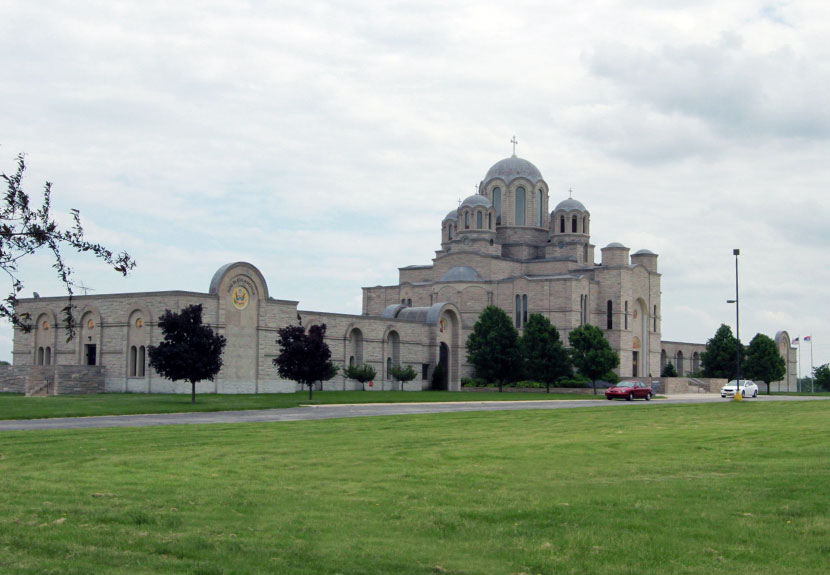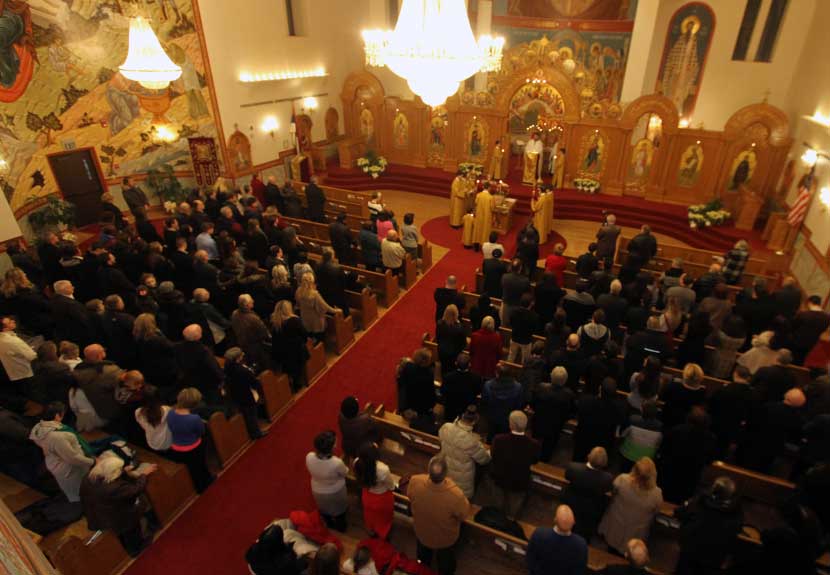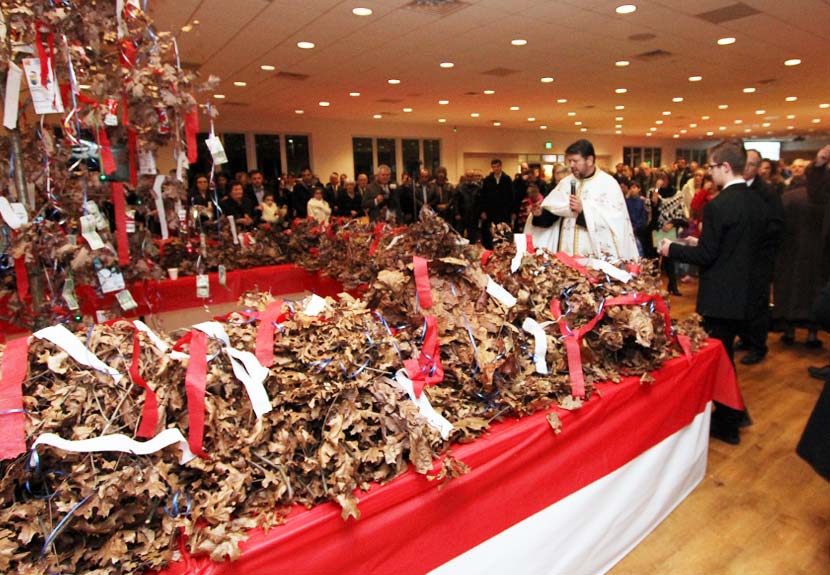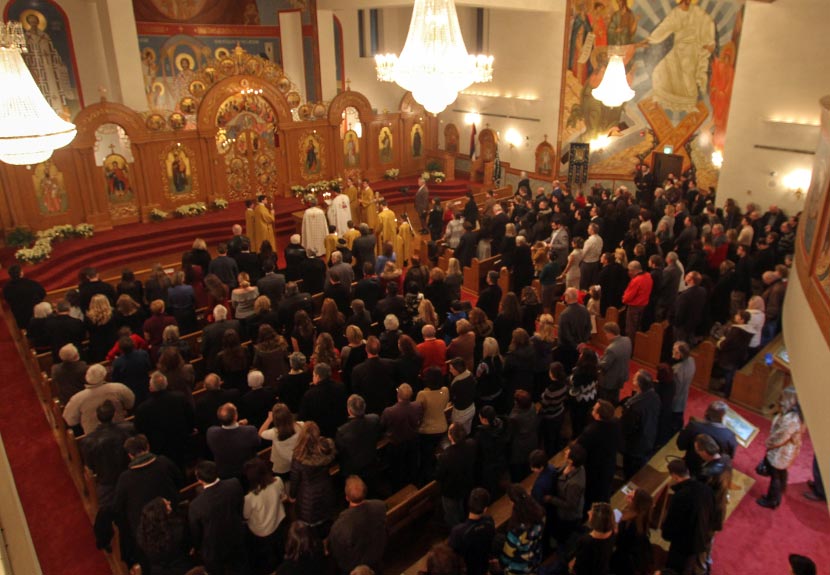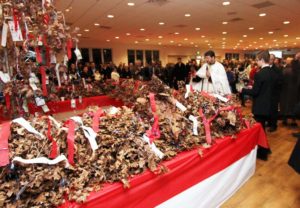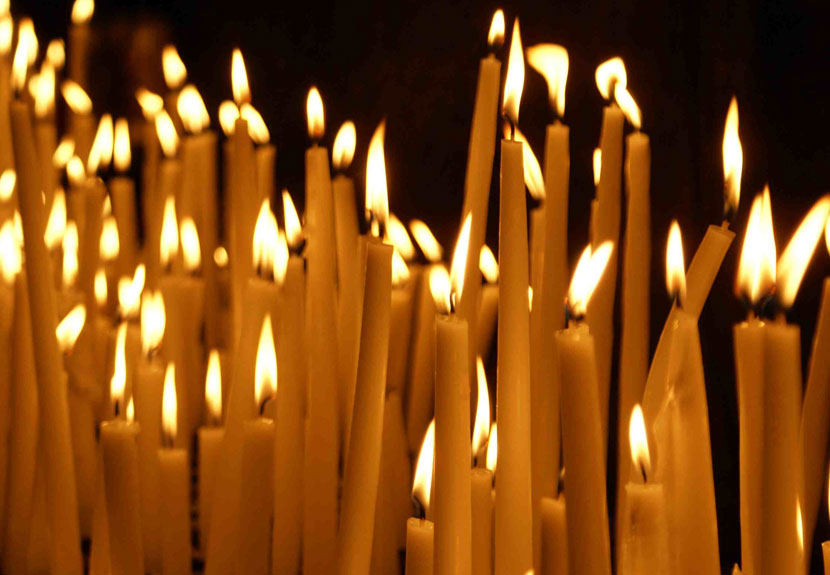Patriarchal Nativity Encyclical 2016
Download the following message in both English and Serbian Cyrillic versions:
The Serbian Orthodox Church to her spiritual children at Christmas, 2016
+IRINEJ
By the Grace of God Orthodox Archbishop of Pec, Metropolitan of Belgrade Karlovci and Serbian Patriarch, with all the Hierarchs of the Serbian Orthodox Church, to all the clergy, monastics, and all the sons and daughters of our Holy Church: grace, mercy, and peace from God the Father and our Lord Jesus Christ and the Holy Spirit, with the joyous Christmas greeting: Peace from God! Christ is Born!
“Glory to God in the highest, And on earth peace, goodwill toward men!” (St. Luke 2:14)
We find ourselves, once again, before the Nativity Feast Day, before the feast day of immeasurable love of God, for today in the city of David Christ the Lord is born (cf. St. Luke 2:11), Emmanuel, which is to say, “God with us”. (St. Matthew 1:23) This great Mystery of the Incarnation of God the Logos, hidden from the beginning of the ages (cf. St. John 1:2), was first announced by the angels of God with their Christmas hymn of peace and love (cf. St. Luke 2:14). Then, they were joined by the shepherds and wise men from the east, gathering, therefore, both heaven and earth, angels and people, and all earthly nations, around the God-Child Christ in the Church of the Living God. (II Cor. 6:16)
How do the evangelists, eye witnesses and servants of the Word of God (cf. St. Luke 1:2), testify to the event of Christ’s Birth which, according to the holy fathers, is a greater miracle then the creation of the world? The Holy Apostle Matthew in his Gospel writes to his Judean countrymen, desiring to witness based on the Old Testament prophecies that Jesus of Nazareth is, indeed, the Christ or Messiah, the Anointed One, the Savior of the world. (cf. Psalm 138; Isaiah 7:14) That is why he begins his Gospel with the genealogy of the Lord Jesus Christ (cf. St. Matthew 1:1-17), emphasizing His real human nature. The evangelist in his genealogy lists the central persons of the Old Testament, especially accentuating Abraham and David the king, because the prophecies about the coming of the Messiah were mostly connected to the two of them, which came to be fulfilled with the Birth of Christ in Bethlehem of Judea. (cf. St. Matthew 2:5-6) The first part of the Gospel according to St. Matthew tells us loudly: For us and our salvation, God becomes a true man (cf. St. Matthew 1, 2); but in the second part of his genealogy, Saint Matthew tells us that the Messiah is the God-Man, that His Birth is above nature, from the Holy Spirit and the Virgin Mary. (cf. St. Matthew 1:20) By taking on real human nature, Christ becomes one of us, (cf. St. John 1:14) remaining that which He always was from all eternity – Son of God and the Second Person of the Holy Trinity. This concisely is the good news according to the Evangelist Saint Matthew, the good news about the salvation of all people through faith in Jesus Christ. (cf. Galatians 2:16)
The Holy Apostle Luke in his Gospel, which he addressed to his disciple Theophilos (cf. St. Luke 1:3) and then to every God-loving soul, gives the historical context of Christ’s Birth. With his apologetic witness he removes the doubts of all skeptics and unbelievers who have tried to claim that Christ the Lord is a legend or a person who did not exist, and he convinces them that Christ is a true and real historical Person and the Messiah. As an historian, Luke cites that Christ’s Birth happened in the time of the Roman Caesar Augustus, who reigned from the year 27 before Christ to the 14 th year after His birth, and during the first general census of the populace at this time Quirinius governed Syria (cf. St. Luke 2:2). These are historical facts not denied even by exact science. Adding to the Matthian account, the evangelist Luke writes about Christ’s Birth not only to the Judeans, but also to all nations on earth. (cf. St. Luke 2:29-32) Saint Luke in his genealogy emphasizes that Christ is the Savior, the New Adam, the Head and spiritual founder of the New Israel – the blessed Kingdom of the Father and the Son and the Holy Spirit (cf. St. Luke 3:21-23), pointing to the liturgical dimension of this Feast Day.
As a crown and a seal we add briefly the witness of the Holy Evangelist John the Theologian about the birth of Christ. This beloved disciple and apostle of Christ adds his Protoevangelion to Matthew and Luke. In it he brings the tidings that Christ is the pre-eternal Son of God, the Word of God, the Logos through Whom everything is created (cf. St. John 1, 1-3), and Who came into this world as the Light (cf. St. John 1:5), to proclaim to us a New and eternal Covenant of God and man: “For the law was given through Moses, but grace and truth came through Jesus Christ.” (St. John 1:17; cf. Rom. 10:4)
Dear brothers and sisters, that which was witnessed by the evangelists and apostles and which the Holy Fathers confirmed, we also witness to you today, on Christmas day, for “Christ is the same today, yesterday and forever.” (Heb. 13:8) That is why we call upon you, with our pastoral care and love, to together take part in the Christmas celebration, to lay aside all earthly cares, to offer our gifts to the God-Child Christ – our spiritual gold, frankincense and myrrh; this means our faith, hope and love – to meet the Lord and our neighbors. Saint John Chrysostom has called Christmas the root of all Christian feast days, because in Christmas we are promised, and in some mystical and grace-filled way we are given before hand, the Meeting of the Lord, his Baptism, and Transfiguration, as well as the Cross and Christ’s Resurrection. That is why our people say: “Without God not even over the threshold” and “there is no greater slava (patron feast day) than Christmas”, for in Christmas our people have foretasted the Mystery of God and the salvation of all people in the Church of Christ.
The Serbian people are a people of Christmas, a part of the People of God and of all generations of Christians; the people of Saint Sava, the people of Holy Tsar Lazar of Kosovo and of all the other martyrs and new-martyrs who have suffered in evil times, as did the slain children of Bethlehem (cf. St. Luke 2:16), for the truth and justice of God. We remember their sacrifice and beseech them to remember us in their prayers in the Holy Bethlehem that we may be worthy of our holy ancestors, as His Holiness Patriarch Pavle of blessed memory used to say.
Christmas reveals to us the goal and meaning of our life on earth. As expressed in the language of the holy Fathers, God becomes man so that we may become gods, so that we may become “gods by grace,” fulfilling our existence with the fullness of divine grace. This is not a Christian exaggeration nor anthropological utopia. This is a reality of life in Christ. This is a reality that is a gift of God. Let us not allow anything of this world, the world that lies in evil (cf. St. John 5:19), to separate us from the love of God revealed in Christ Jesus our Lord (cf. Rom. 8:35)! The fullness of this love is seen in the Birth of Christ. That is why Christmas truly is the “day which the Lord has made to rejoice and be glad in it.” (Psalm 118:24)
Christmas also points to the holiness of human life. This Feast Day calls us to theosis, not to destruction, to the service of life, not only biological but also eternal, and not to slavery or death. Saint Silouan the Athonite Elder tried in his life not to step on a worm, an ant, a flower, nor the smallest blade of grass. Life is given to everything by God, but especially to human beings, which in Christ are the icons of the Living God. (cf. II Cor. 4:4) Christmas strengthens and returns to us the biblical blessing: “Be fruitful and multiply, and fill the earth.” (Genesis 1:22) May the Lord grant that this blessing becomes a rule of life for the Serbian people and for all nations on earth, for in this way the hell of murdering brothers and unborn infants would be replaced by peace from paradise and the fullness of life. With this Christmas may Serbia come to life and may our families be filled with joy and children’s play! The Holy Gospel reminds us that if we do not become innocent like children we will not enter the Kingdom of heaven. (cf. St. Matthew 18:3) That is why Christmas is a feast day of our children as well, the feast day of the youth and future eternity.
On this blessed Christmas day we pray to the Lord, the King of peace, (cf. Hebrew 7:2) to extinguish enmity among the nations, to save His people throughout the world, and to be merciful to us. May this Christmas call into communion all those who in any way have estranged themselves from the Church of the Living God! May heresies and schisms disappear, that all people, with fear of God, with faith and love, may approach the unity and life of the One, Holy, Catholic (Saborna) and Apostolic Church! For this unity the Lord Himself prayed in his archpriestly prayer: “That all may be one”. (St. John 17:21)
We greet all our spiritual children in our Fatherland and those abroad with the Christmas salutation, calling them to live in mutual brotherly love – Christmas love. We especially pray for the crucified Kosovo and Metohija, our spiritual and national cradle, which the great Njegos has called a “great tribunal”. As long as there are Serbs, there will be Kosovo! Kosovo is the Serb’s soul! That is why Kosovo and Metohija will remain our country, for there is present both our Golgotha and our Jerusalem. May our God, the Only Lover of mankind, grant peace and blessing to all of His people, and according to the words of Holy Silouan the Athonite, grant that all people on earth may recognize Him by the Holy Spirit in the miraculous light of Christmas!
PEACE FROM GOD – CHRIST IS BORN!
INDEED HE IS BORN!
A BLESSED NEW YEAR OF OUR LORD 2017!
Given at the Serbian Patriarchate in Belgrade at Christmas, 2016.
Your intercessors before the cradle of the divine Christ-Child:
Archbishop of Pec,
Metropolitan of Belgrade-Karlovci and
Serbian Patriarch IRINEJ
- Metropolitan of Montenegro and the Coastlands AMPHILOHIJE
- Metropolitan of Zagreb and Ljubljana PORFIRIJE
- Bishop of Sabac LAVRENTIJE
- Bishop of Srem VASILIJE
- Bishop of Banja Luka JEFREM
- Bishop of Budim LUKIJAN
- Bishop of Banat NIKANOR
- Bishop of New Gracanica-Midwestern America LONGIN
- Bishop of Canada MITROPHAN
- Bishop of Backa IRINEJ
- Bishop of Great Britain and Scandinavia DOSITEJ
- Bishop of Zvornik-Tuzla CHRYSOSTOM
- Bishop of Osijek and Baranja LUKIJAN
- Bishop of Western Europe LUKA
- Bishop of Zicha JUSTIN
- Bishop of Vranje PAHOMIJE
- Bishop of Sumadija JOVAN
- Bishop of Branicevo IGNATIJE
- Bishop of Dalmatia FOTIJE
- Bishop of Bihac and Petrovac ATANASIJE
- Bishop of Budimlje and Niksic JOANIKIJE
- Bishop of Zahumlje and Hercegovina GRIGORIJE
- Bishop of Valjevo MILUTIN
- Bishop of Ras and Prizren TEODOSIJE
- Bishop of Nis JOVAN
- Bishop of Western America MAXIM
- Bishop of Gornji Karlovac GERASIM
- Bishop of Eastern America IRINEJ
- Bishop of Krusevac DAVID
- Bishop of Slavonia JOVAN
- Bishop of Austria and Switzerland ANDREJ
- Bishop of Frankfurt and all Germany SERGIJE
- Bishop of Timok ILARION
- Bishop of Australia and New Zealand SILOAN
- Retired Bishop of Zvornik-Tuzla VASILIJE
- Retired Bishop of Canada GEORGIJE
- Retired Bishop of Zahumlje and Hercegovina ATANASIJE
- Retired Bishop of Central Europe CONSTANTINE
- Retired Bishop of Slavonia SAVA
- Retired Bishop of Mileseva FILARET
- Former Bishop of Nis JOVAN
- Vicar Bishop of Moravica ANTONIJE
- Vicar Bishop of Toplica ARSENIJE
- Vicar Bishop of Dioclia KIRILO
THE ORTHODOX ARCHDIOCESE OF OCHRID:
- Archbishop of Ochrid and Metropolitan of Skoplje JOVAN
- Patriarchal Nativity Encyclical 2016 p. 5
- Bishop of Polos and Kumanovo JOAKIM
- Bishop of Bregal MARKO
- Vicar Bishop of Stobija DAVID
[Path of Orthodoxy translation]
